Exploring Vilnius: Lithuania’s Beautiful Capital That No One Is Talking About
Never in my life did I imagine I would be travelling to Lithuania. The only time I had ever even heard of the Baltic state was when they played England in international football.
Fresh out of university with a degree in sports journalism and no job lined up, I decided to take a risk. Instead of waiting around, I booked a flight and began my journey into the unknown.
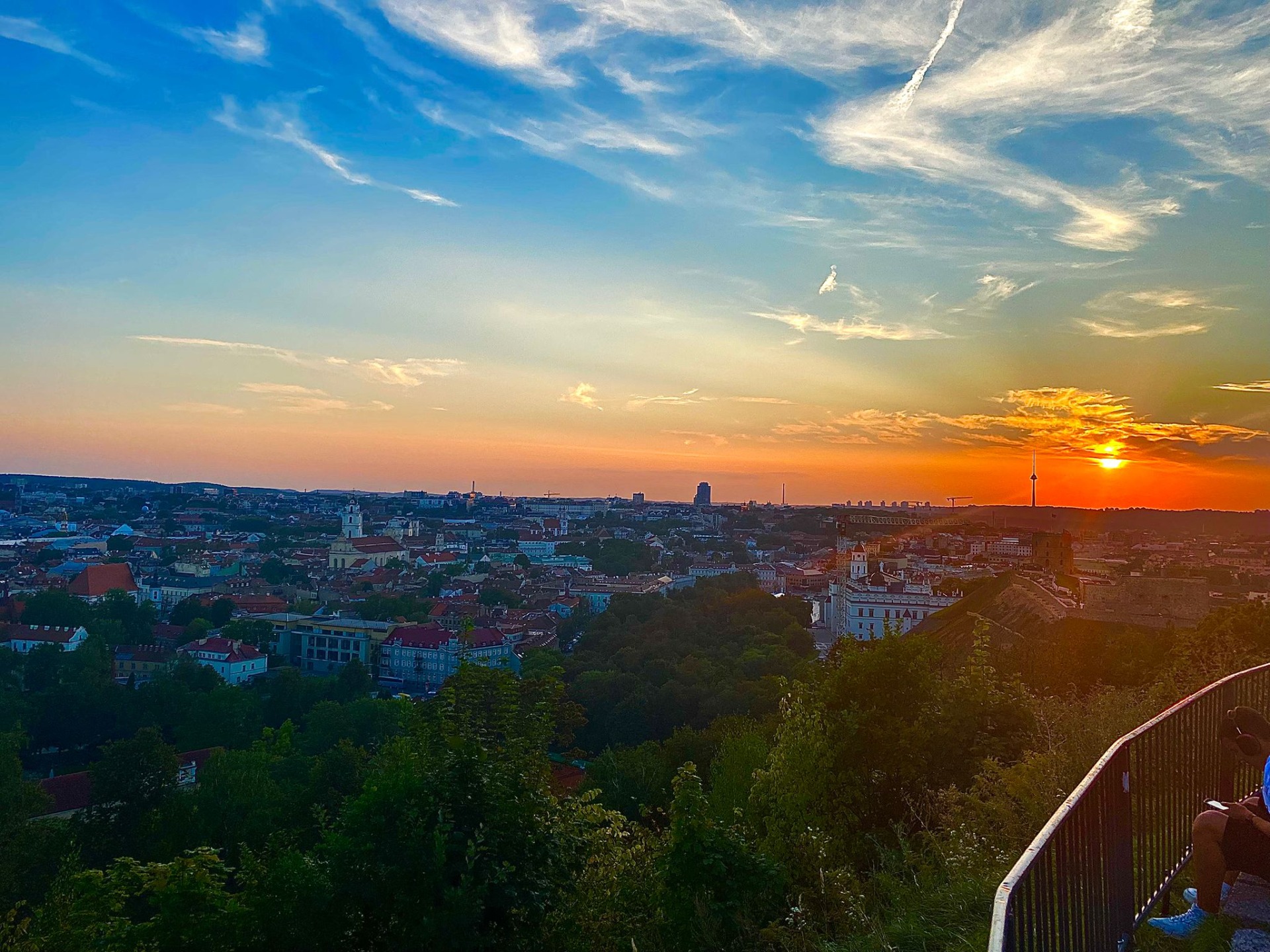
On my second night I watched the sunset over Vilnius from the Hill of Three Crosses.
When the chance came to visit Vilnius, the capital city, I did not hesitate, even though I knew almost nothing about this small country tucked away in the northeast of Europe.
For someone who can barely navigate the London Underground, the idea of exploring an entire country solo sounded like a challenge. But to my surprise, it turned out to be one of the best experiences of my life.
Here is an insight into my trip, what I learned along the way and why Lithuania should be on your travel list.
Language: Easier Than Expected
One of my biggest worries before arriving in Lithuania was the language barrier. I had no idea what to expect but was pleasantly surprised by how much English locals knew, especially considering the country welcomes only about one million tourists per year.
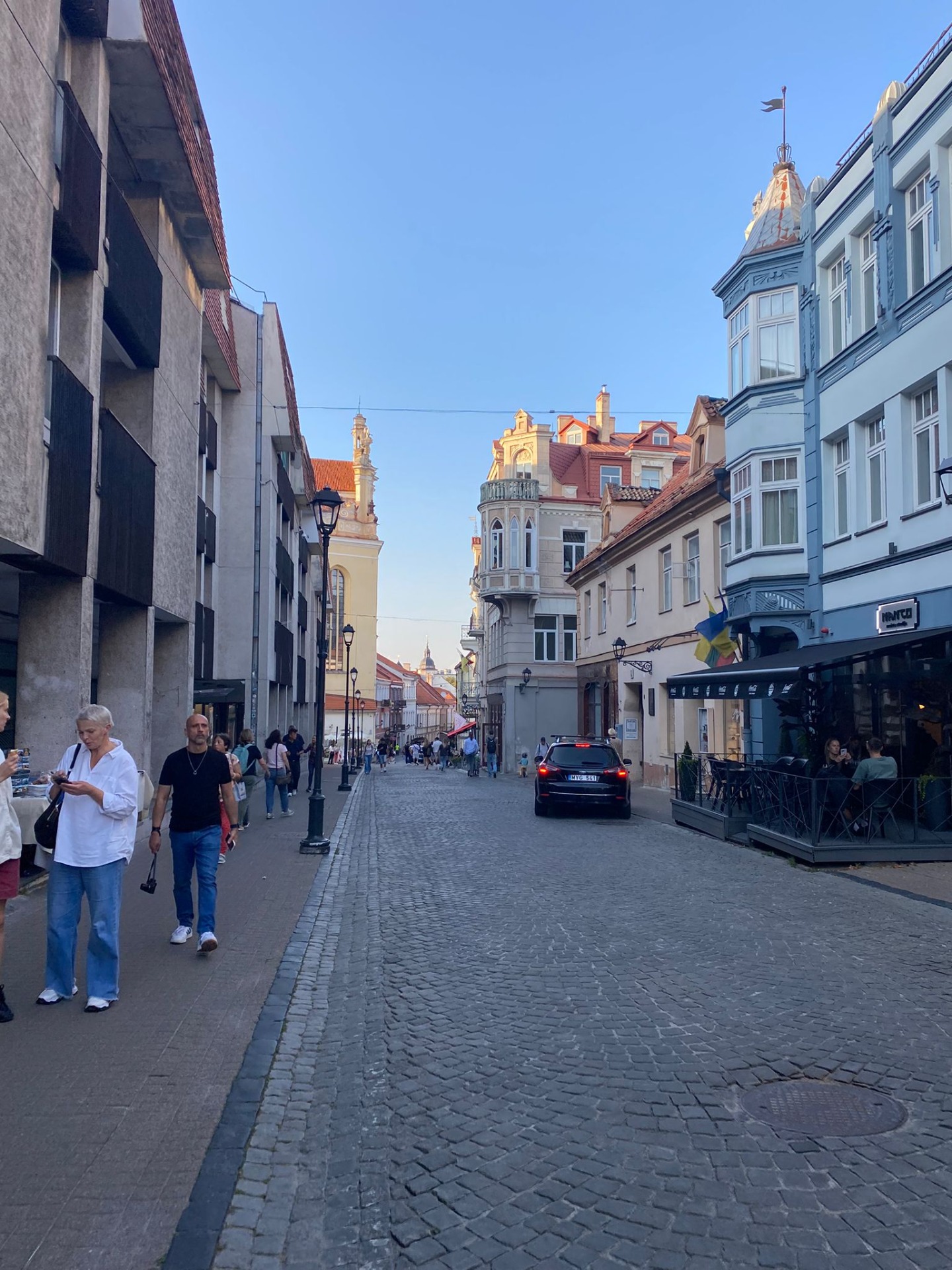
One of many streets in Vilnius Old Town. The perfect place to explore.
In Vilnius, many locals, particularly younger people, spoke English well enough to help with directions or have a friendly chat. It made navigating the city far easier than I had imagined.
Outside the capital, things were a little different. English was less common, and conversations often relied on a mix of hand gestures, smiles and Google Translate. The older generation in particular spoke little to no English, with Russian often being their second language instead.
Despite this, I never felt unwelcome. Lithuanians are polite, patient and often genuinely pleased that a foreign traveller has taken an interest in their country.
If you need help or directions, your best option is to ask someone younger, as they are usually happy to assist and may even share some local tips along the way. Learning a few basic Lithuanian phrases, such as labas ("LAH-bus") for hello or ačiū ("ah-choo") for thank you, also goes a long way and is always appreciated.
Getting Around: A City Made for Walking
My personal preference when travelling is always to walk, even if the map warns that it will take more than two hours.
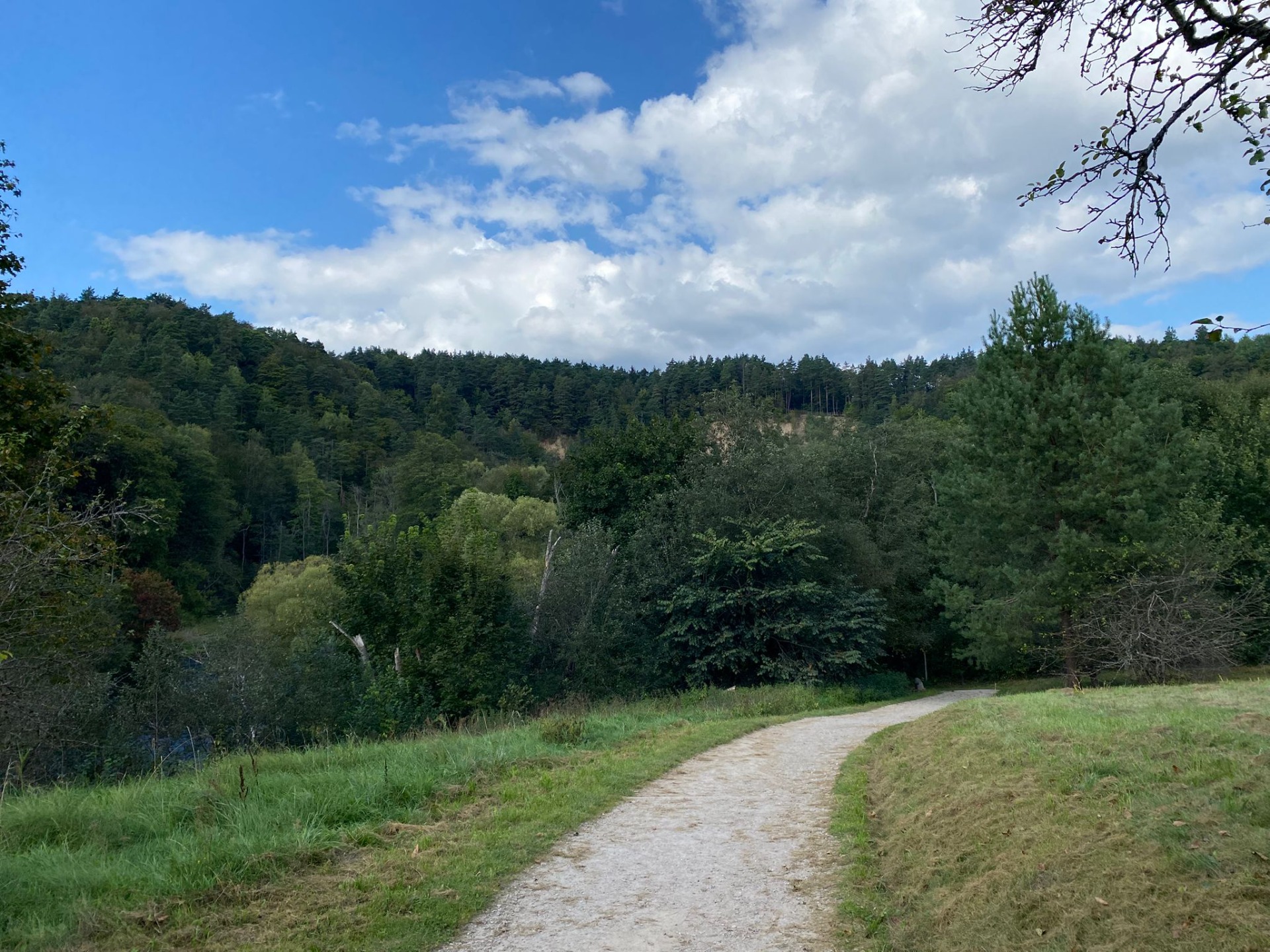
Following a path alongside the Vilnia river leads you into the heart of Pavilnys Regional Park,
Although there was a direct train from the airport to the city centre that only took around eight minutes, along with plenty of buses available, I decided to walk instead and take in Vilnius at my own pace.
If you enjoy walking like I do, Vilnius is the perfect city to explore. Almost every road is lined with a footpath, making it safe and comfortable for pedestrians. Despite the airport being six kilometres from the centre, I walked the entire route and never once had to step onto the road.
The city's network of paths is excellent, and you can walk almost anywhere without feeling unsafe. It is one of the most walkable capitals I have ever visited, and exploring on foot lets you see so much more than you ever could from behind a bus window.
Public Transport: Simple and Reliable
If you are someone who does not enjoy walking, you are still in luck. As someone who has been known to get lost on the London Underground, I was genuinely surprised at how easy Lithuania's public transport system was to use.
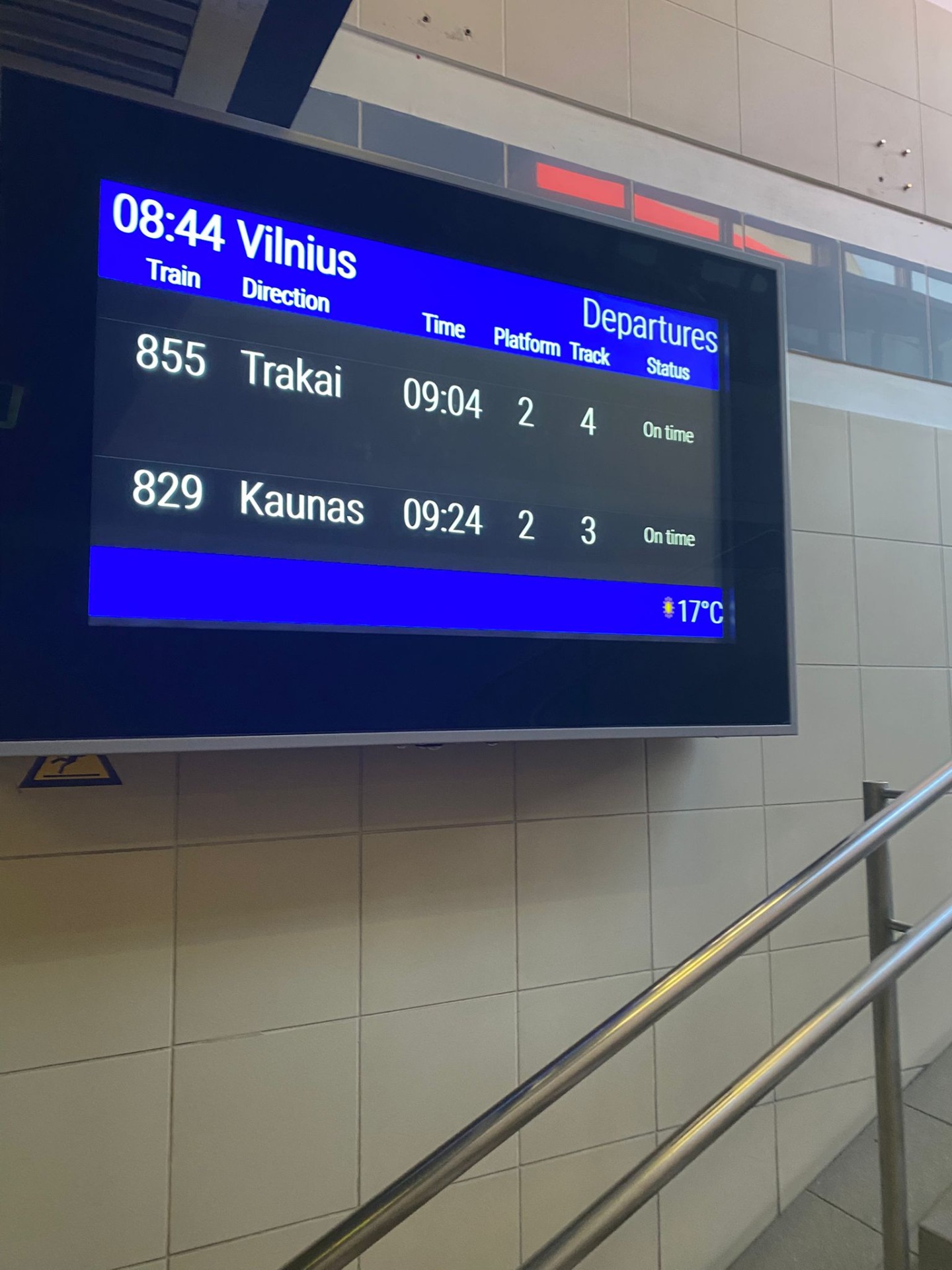
Train boards are in both English and Lithuanian making stations easy to navigate.
The buses and trains are reliable, clean, affordable and straightforward to navigate.
For trains, the LTG website is the best place to check schedules and buy tickets, available in both English and Lithuanian. This was my preferred method, but you can also purchase tickets at some stations from machines. If you buy directly from the conductor, there is a €2 additional charge.
To validate an online ticket, simply show the QR code sent to your email when the conductor comes around. They will scan it, and no further validation is needed.
If buses are more your style, the Trafi app is a must-have. It allows you to buy tickets, plan routes and track arrivals in real time. You can also buy a 30-minute ticket directly from the driver or pay for a 60-minute ticket on the vehicle's validator machine using a contactless card or smart device.
The only form of public transport I used during my trip was a 30-minute train from Vilnius to the historic town of Trakai. It cost just €6 for a return ticket and allowed me to explore beyond the capital with ease.
Other popular train routes include Vilnius to Kaunas, Klaipėda, Šiauliai and Visaginas. There are also direct international connections to Warsaw in Poland and Riga in Latvia, making Vilnius a convenient base for wider Baltic adventures.
What I Ate: Travelling on a Budget
I am probably not the best person to ask about food options in Vilnius as I mostly survived on the Lidl bakery and never ate a proper meal during my stay. It is not something I would recommend for a balanced diet, but it worked for me and kept my costs low.
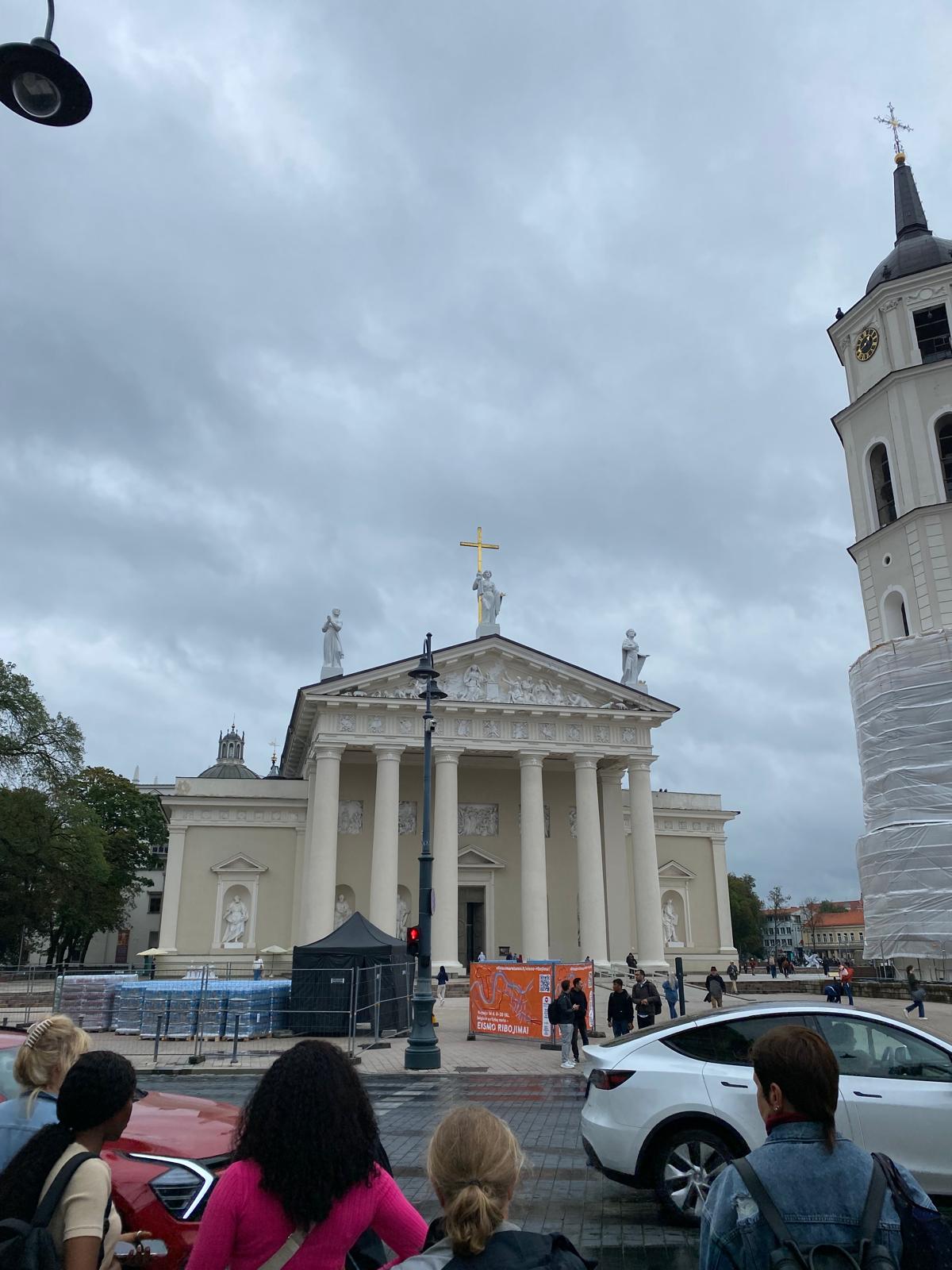
Vilnius Cathedral square is one of the busiest areas inside the capital but is a perfect starting point to search for restaurants and bars.
If you visit the Old Town, which is recognised as a UNESCO World Heritage Site, you will find plenty of restaurants serving traditional Lithuanian dishes such as cold borscht, along with international options like burgers, pizza and pasta. The best way to find somewhere to eat is simply to wander through the Old Town and choose a place that catches your eye.
One traditional food I did try was a kibinai, a warm and flaky pastry filled with mutton and onion. You can find stalls selling them across Lithuania as it is the national dish of the Karaite people, or you can visit a local bakery to pick one up fresh.
In true budget-traveller style, I bought mine from Lidl for less than one euro, and it was surprisingly delicious. It might not be fine dining, but it was definitely value for money.
For those craving comfort food, you can also find familiar names like McDonald's and KFC scattered throughout Vilnius.
What It's Like: The Perfect Blend of City and Nature
Lithuania is a beautiful country that offers a perfect balance of city life, nature and nightlife. By staying near Vilnius Old Town, you can wander down cobbled streets surrounded by Gothic, Renaissance, Baroque and Neoclassical architecture. As evening approaches, stop for a bite to eat before heading to a local bar to enjoy the city's laid-back nightlife scene.
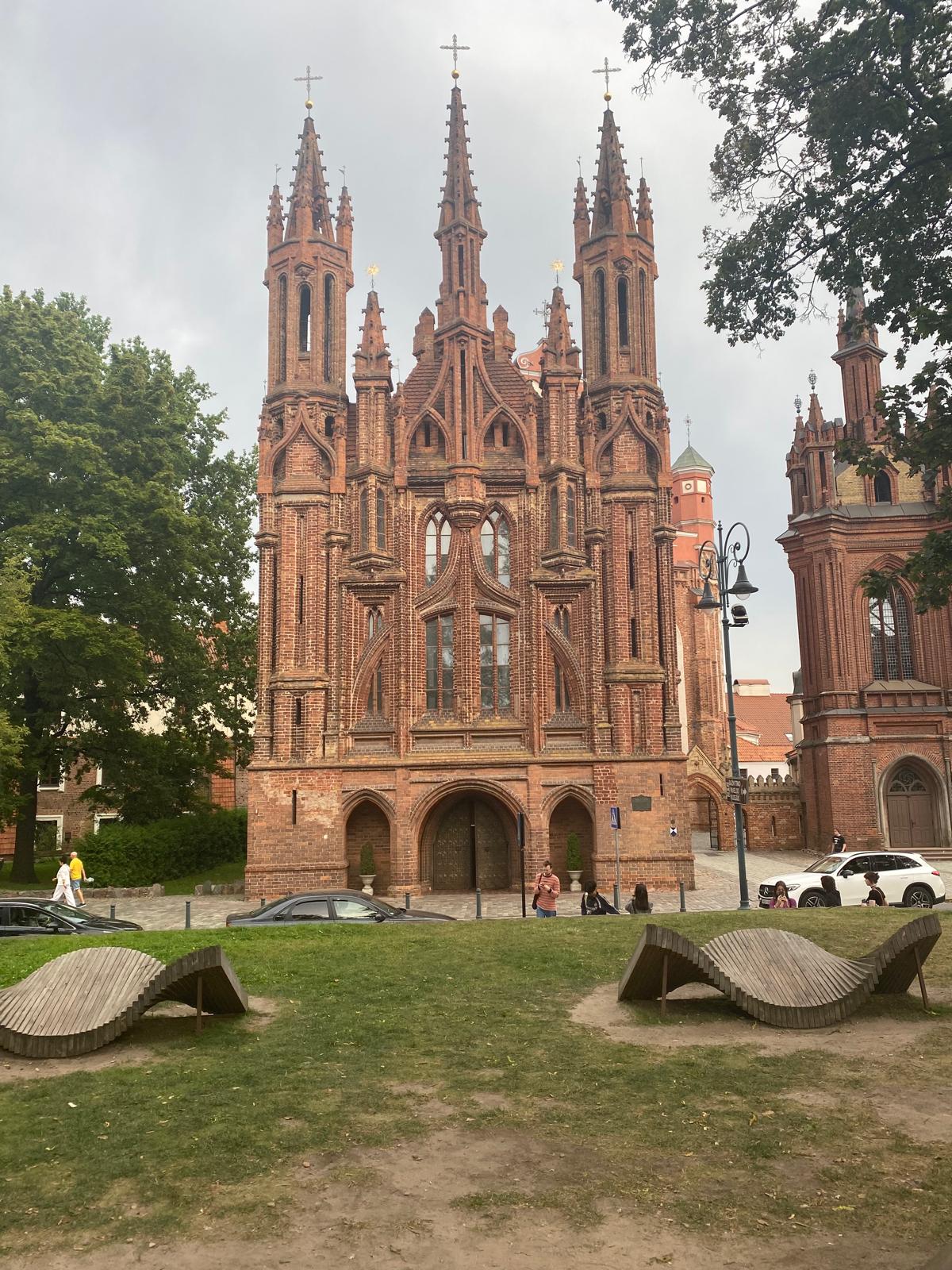
The Church of St Anne is just one of the many incredible buildings dotted around the UNESCO old town.
Across the Neris River, on the opposite side of the Old Town, lies the modern face of Vilnius, complete with sleek skyscrapers, shopping centres and contemporary architecture. It is fascinating how easily the old and new blend together in this small but vibrant capital.
If you don't want to venture far from the centre but still want to enjoy great walks, there are plenty of options. A scenic path runs alongside the Neris River, perfect for a peaceful stroll or a long riverside walk depending on your pace. For a greener escape, follow the Vilnia River through the lush Kalnai Park and beyond.
If you continue far enough, you will eventually reach Pavilnys Regional Park, a breathtaking valley filled with forest trails, viewpoints and sweeping views over the landscape. It is the ideal place to reconnect with nature without leaving the city limits.
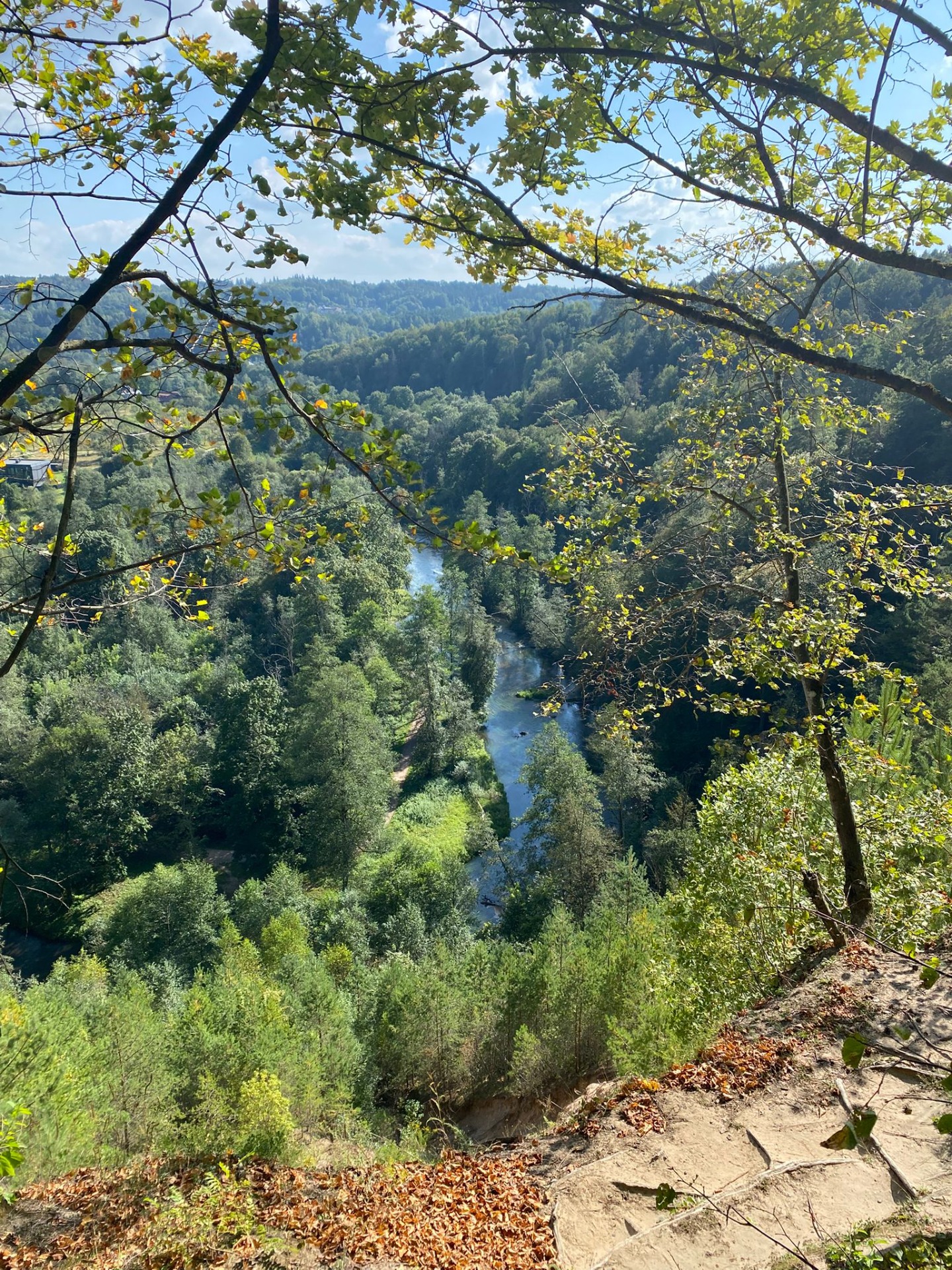
Pavilnys Regional Park is the perfect place to escape from the busy centre and take in the beautiful nature that Lithuania has to offer.
Another must-visit nature spot within Vilnius is the Hill of Three Crosses. The walk up provides an interesting glimpse into the city's history, and the panoramic view from the top is one of the best in the capital.
Overall, Vilnius offers so much to see and do within a compact area and truly deserves a spot on every traveller's list. It is a city that combines history, beauty and simplicity, making it one of Europe's most underrated destinations.
